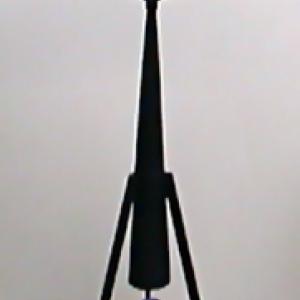College of Liberal Arts & Sciences
4C30.25 - Geyser - Relaxation Oscillator
See the 8A50.85 entry.
Fill the geyser demo with water to a depth of about 2" above the central hole. Place the fisher burner under the demo and bring to a boil. The cycle period for this geyser is about 30 sec to 1 min once completely warmed. NOTE: The splash screen may be taken out of the demo for better viewing, however extreme caution must be taken due to the boiling water that splashes out.
This Demo is located at 8A50.85 in the Astronomy Section. A liquid nitrogen geyser may be produced by inserting a piece of Tygon Vaccum tubing into a reservoir of liquid nitrogen. Gas and liquid will spew forth quite dramatically.
We have a variety of relaxation oscillators available. Look at these webpages:
3A95.10 - Relaxation Oscillators
6-00.00 - Stroboscope (we have small variable frequency strobe lights available).
2B60.30 - Tantalus Cups
3D32.15 - Stadium Horn
4C30.25 - Geyser
4C31.30 - Drinking Bird
4C31.37 - Franklin's Pulse Glass Engine
5A40.70 - Kelvin Water Dropper
5F30.60 - Relaxation Oscillators - Neon Bulb, Doorbell, and Strobe Lights
10A06.10 - Relaxation Oscillators
13A10.10 - Perpetual Motion
- Jean Zheng, "Grand Prismatic Spring", TPT, Vol. 57, #2, Feb. 2019, p. 128.
- Paul Hewitt, "Figuring Physics", TPT, Vol. 25, #5, May 1987, p. 340.
- John S. Rinehart, "Old Faithful Geyser", TPT, Vol. 7, #4, Apr. 1969, p. 221.
- National Oceanography Centre, Southampton, UK., "Smoke From the Deep", Physics Today, Vol. 63, #5, May 2010, p. 72.
- Hj-5: Freier and Anderson, A Demonstration Handbook for Physics.
- H-264: "Pop Corn and Geyser Simulator", DICK and RAE Physics Demo Notebook.
- Tik Liem, "How Does a Geyser Work?", Investigation to Science Inquiry, p. 402.
- L. Karlstrom et. al, "Dynamics of a Geyser", Physics Today, Sept. 2013, p. 17.
- Julien Clinton Sprott, "2.6, Model Geyser", Physics Demonstrations, ISBN 0-299-21580-6, p. 79.
- Jearl Walker, "4.51, Geysers and Coffee Percolators", The Flying Circus of Physics Ed. 2, p. 199.
- Janice VanCleave, "Pop Top", Earth Science for Every Kid - 101 Easy Experiments That Really Work, p. 58.
- "Hot Springs and Geysers", How it Works - Science Supplement, Spring 2001, p. 102.
- Guinness Book of World Records, "Largest Geyser Death Toll", 2003, p. 69.
- Prof. Robert Griffith, "Geysers and How to Make One", Boys' Useful Pastimes, p. 136.
Disclaimer: These demonstrations are provided only for illustrative use by persons affiliated with The University of Iowa and only under the direction of a trained instructor or physicist. The University of Iowa is not responsible for demonstrations performed by those using their own equipment or who choose to use this reference material for their own purpose. The demonstrations included here are within the public domain and can be found in materials contained in libraries, bookstores, and through electronic sources. Performing all or any portion of any of these demonstrations, with or without revisions not depicted here entails inherent risks. These risks include, without limitation, bodily injury (and possibly death), including risks to health that may be temporary or permanent and that may exacerbate a pre-existing medical condition; and property loss or damage. Anyone performing any part of these demonstrations, even with revisions, knowingly and voluntarily assumes all risks associated with them.
